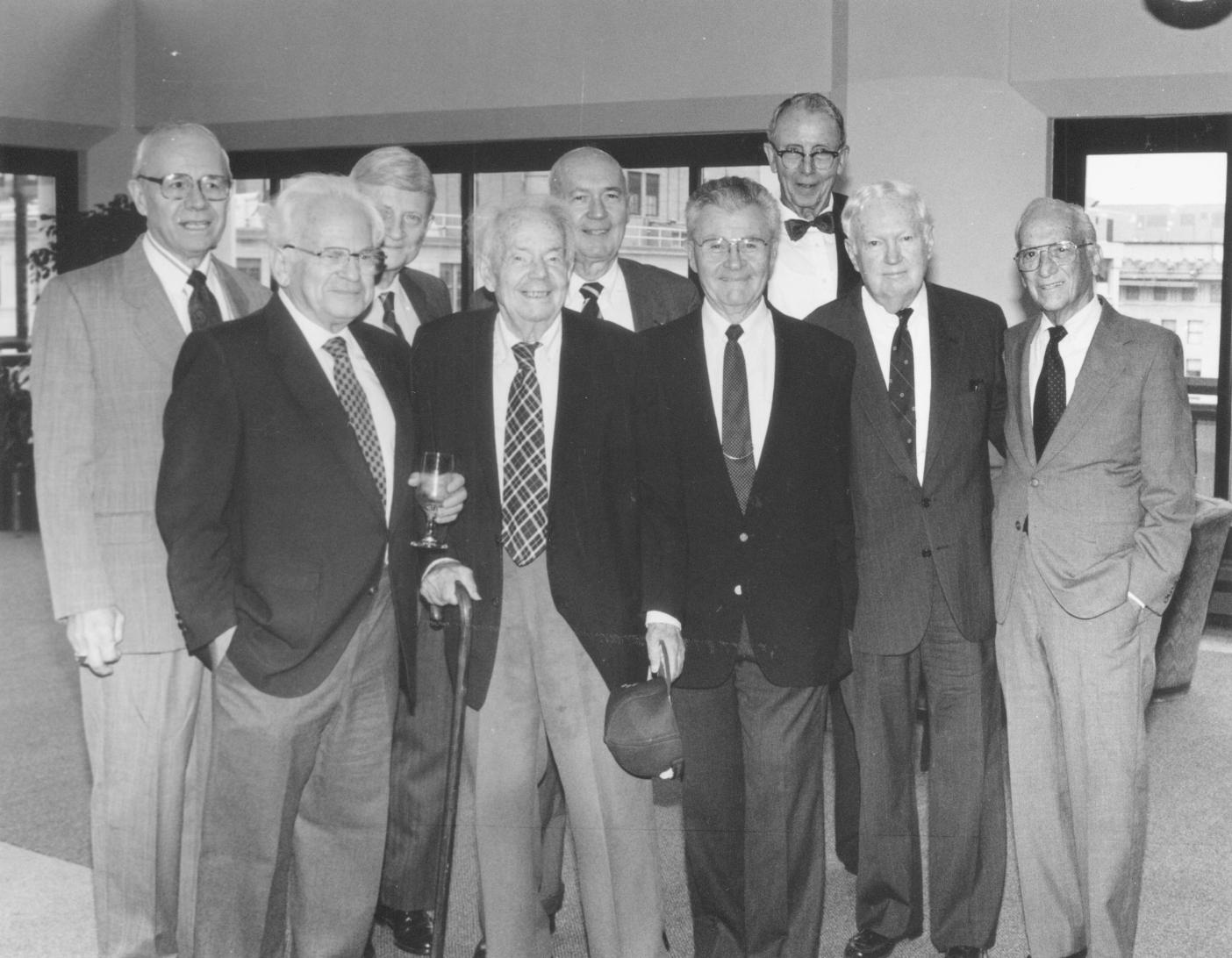1995 NPC luncheon highlighted member service in WWII

Left to right: Don Larrabee, Joe Laitin, John Harllee, Edgar Alan Poe, Ed Prina, Gen. Paul Tibbets, Frank Holeman, John Cosgrove, Shirley Povich.
Next month will mark Veteran's Day and the 100th anniversary of the founding of National Press Club American Legion Post 20. This is one in a series of pieces featuring Club veterans.
As a member of the National Press Club's Speakers Committee from the 1990s into the 2000s, I'd put together many head tables for luncheon speakers. But just over 24 years ago I organized a head table I knew would be very special. It became the only one I know of to receive a standing ovation. Some who stood to applaud had tears in their eyes.
The speaker on Sept. 22, 1995, was retired Air Force Gen. Paul Tibbets, the pilot of the Enola Gay, the B-29 that delivered the atomic bomb to Hiroshima and hastened the end of World War II 50 years earlier. His subject was controversy over displaying the Enola Gay at the Air and Space Museum's new Udvar-Hazy Center near Dulles Airport. (Components of the historic aircraft were eventually put on display.
What made the luncheon exceptional were the World War II veterans at the head table, all of them Club members and all having been in the Pacific.
Four had been presidents of the Club: Frank Holeman (1956), John Cosgrove (1961), Warren Rogers (1972), and Donald Larrabee (1973). One, John Harllee, witnessed to start of the war at Pearl Harbor, and two, Joe Laitin and Edgar A. Poe, Jr., were aboard the USS Missouri in Tokyo Bay on Sept. 2, 1945, when Japan formally surrendered. I interviewed each of them about their wartime experience and how they felt about Truman's use of the atomic bomb. They were unanimous in believing its use was justified in hastening an end to the war and avoiding enormous casualties on both sides.
Each veteran had a tale to tell. Harllee, a young Navy lieutenant whose house above Pearl Harbor was shot up by a Japanese fighter on Dec. 7, 1941, went on to command a PT boat squadron in the South Pacific and helped select a future President, John F. Kennedy, for PT boat training. President Kennedy appointed Harllee to the U.S. Maritime Commission. Rogers helped storm the beaches as a Marine at Guadalcanal in the first major island offensive. Larrabee was among the first to land with occupation forces at Yokohama. Holeman joined occupation forces on Honshu and in 1946, while covering Truman, personally thanked the President for sparing him and thousands of other U.S. soldiers from a bloody invasion by using the atomic bomb.
Two Navy veterans survived kamikaze attacks on their ships. Ed Prina, a former Club Board member, saw six of the nine ships in his task force off Leyte Gulf hit in suicide planes. Cosgrove's destroyer escort fought off eight suicide attacks and was hit by shore fire off Okinawa. Shirley Povich, the renowned Washington Post sports editor and reporter, was an injured war correspondent evacuated from Okinawa the day before his close friend Ernie Pyle was killed by a sniper.
Laitin was interviewing Gen. Douglas MacArthur in Manila for Reuters on Aug. 6, 1945, the day the first of two atomic bombs was dropped. Laitin would later join New Orleans Times-Picayune correspondent Poe aboard to Missouri to witness surrender ceremonies on Sept. 2 in Tokyo Bay. Poe, a long-time head of the White House Correspondent's Association, had not been to the Club in years due to declining health. But he was assisted to his seat to join his fellow veterans in what would be his last Club visit.
The poignancy of seeing these aging World War II veterans together 50 years after their war ended was not lost on the luncheon audience. As Club President Bud Karmin completed their introduction, attendees began to stand and applaud. Karmin encouraged everyone to join in. All of those veterans have since died.
The gathering was a small sampling of Club members who as young men and women served in World War I and II. Most rarely if ever spoke of their experiences. The Tibbets luncheon provided a rare sampling of what so many experienced.
